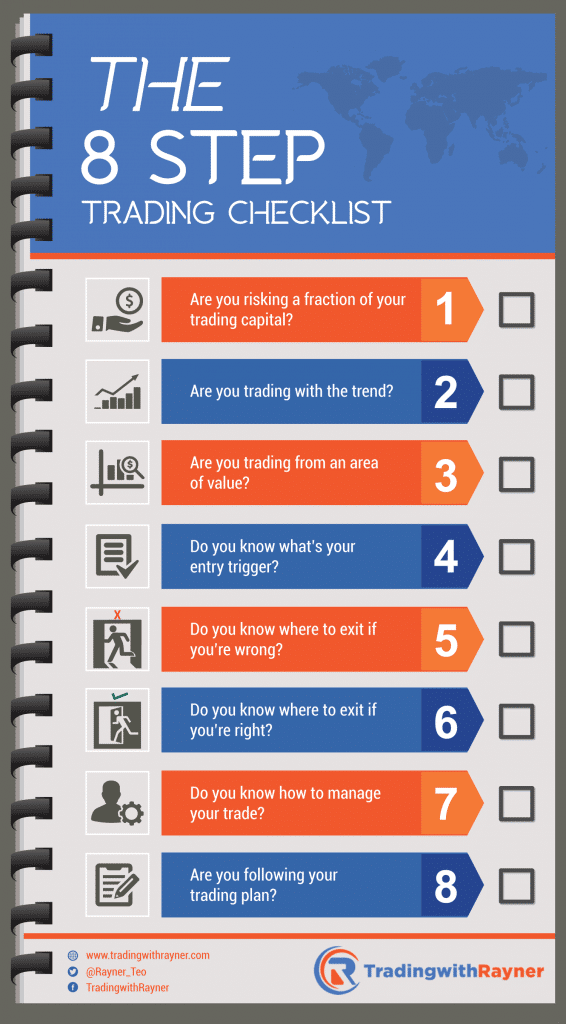
It can be difficult to trade well with the amount of “noise” out there.
Price action, indicators, trend lines, Support & Resistance, Fibonacci, blah blah.
Where do you even begin?
Well, it turns out, you can use a forex trading plan checklist to skip all the fluff out there, and focus on stuff that really matters.
And in today’s post… I’m going to share with you, the 8 step trading checklist that will take your trading to the next level.
Then let’s get started.

Here’s the thing…
You can have the best trading system with the best forex trading plan checklist, but without proper risk management, you’re still going to blow up.
You have a trading system that wins 50% of the time with 1:2 risk reward profile.
And you have a hypothetical outcome of L L L L W W W W
If you risk 30% of your equity, you’d blow up by the 4th trade (-30 -30 -30 -30 = -120%)
If you risk 1% of your equity, you’d have a gain of 4% (-1 -1 -1 -1 +2 +2 +2 +2 = 4%)
Having a winning system without proper risk management isn’t going to get you anywhere.
You need a winning system with proper risk management.
The recovery from the risk of ruin is not linear, it could be impossible to recover if it goes too deep.
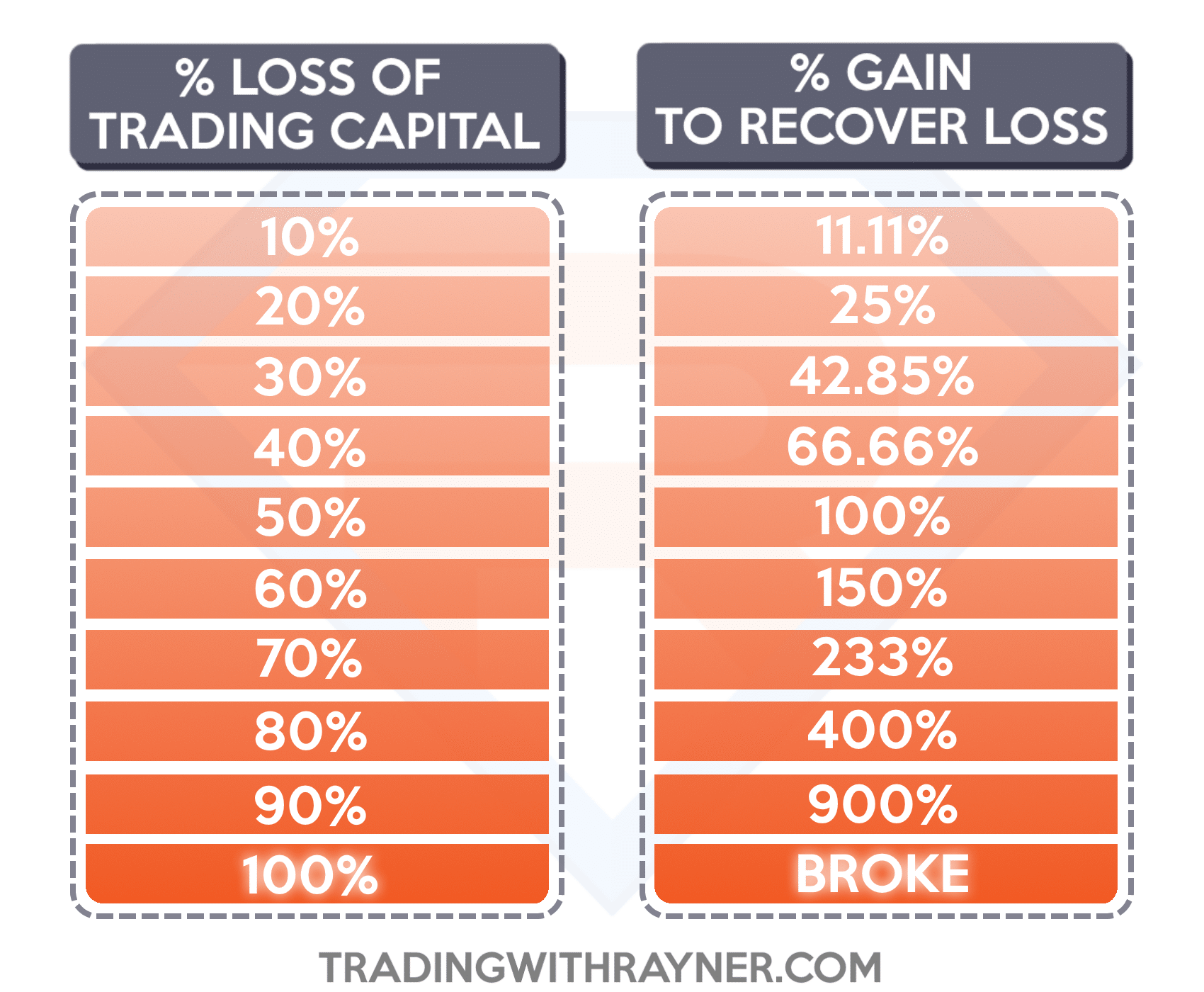
If you lose 50% of your capital, you need to make back 100% to break even. Yes, you read right. 100%, not 50%.
That’s why you always want to risk a fraction of your equity, especially when your winning ratio is less than 50%.
So, how much should you risk exactly?
This depends on your winning ratio, the risk to reward, and your risk tolerance. I would advise risking no more than 1% per trade.
Here’re a few risk management tools for you:
And a quick training video on how to determine your position size…
A mistake made by many traders is that they become so involved in trying to catch the minor market swings that they miss the major price moves. – Jack Schwager
I’m not saying trading against the trend is wrong.
But for new traders starting out, one of the best ways to improve your trading performance is, trading with the trend (and not against it).
Here’s what I mean…
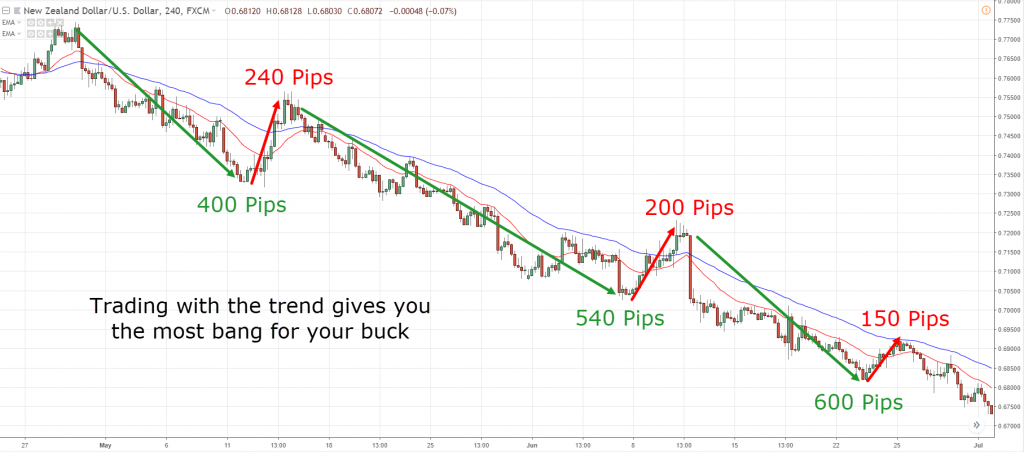
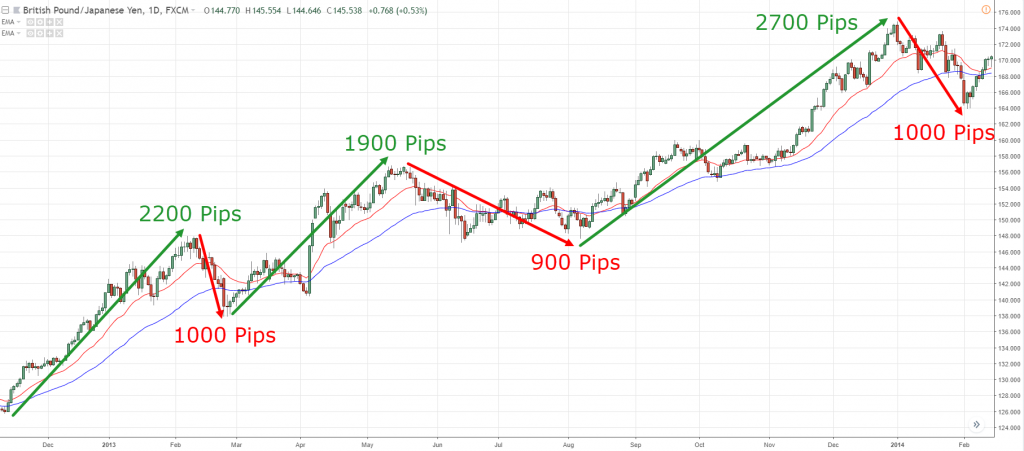
By trading with the trend:
Now, if you want to learn how to define a trend, go watch this training video below:
I’m sure you’ve heard the saying, buy low and sell high.
If you’re buying groceries, you know how much you’re willing to pay based on your past experiences. Anything above your expectations, you’ll not buy it.
But when it comes to trading…
How do you identify an area of value?
How do you identify what’s low and what’s high?
This is where Support & resistance (SR) can help you.
Support – An area with potential buying pressure to push price higher (area of value in an uptrend)
Resistance – An area with potential selling pressure to push price lower (area of value in a downtrend)
Here’s what I mean…
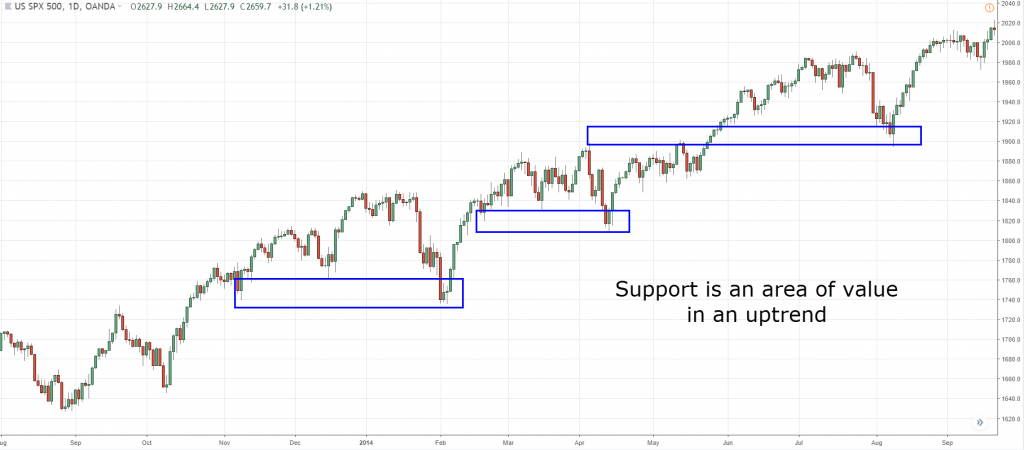
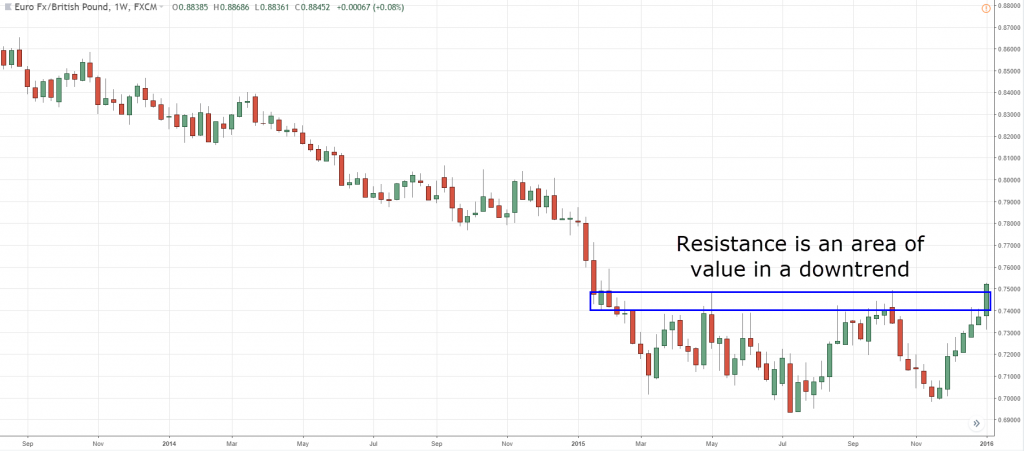
What you’ve seen earlier is what I call, classical Support & Resistance (horizontal lines)
Alternatively, it can come in the form of a moving average. This is known as dynamic Support & Resistance (and I use the 20 & 50 EMA).
This is what I mean…
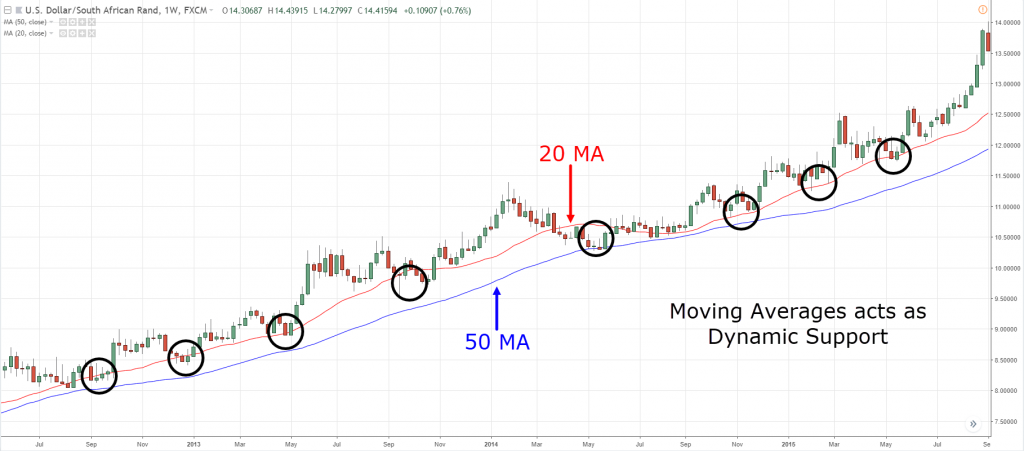
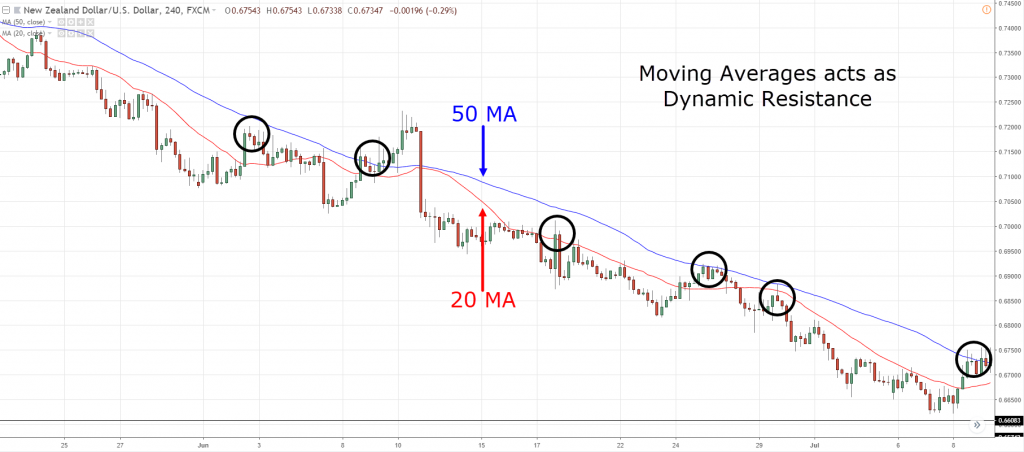
Some benefits of trading at support & resistance (SR):
Watch this short training video below and learn how to use SR and improve your trading performance:
Here are 3 fundamental facts of trading:
Entry determines the frequency of your trades, and that’s it.
Do not spend most of your time on it because there are far more important things to consider (like risk management, trend, trade location etc).
Now you’ve understood it…
Let’s look at some ways you can enter a trade:
A pullback is when price temporarily moves against the underlying trend.
In an uptrend, a pullback would be a move a lower.
Here’s an example:
In a downtrend, a pullback would be a move higher.
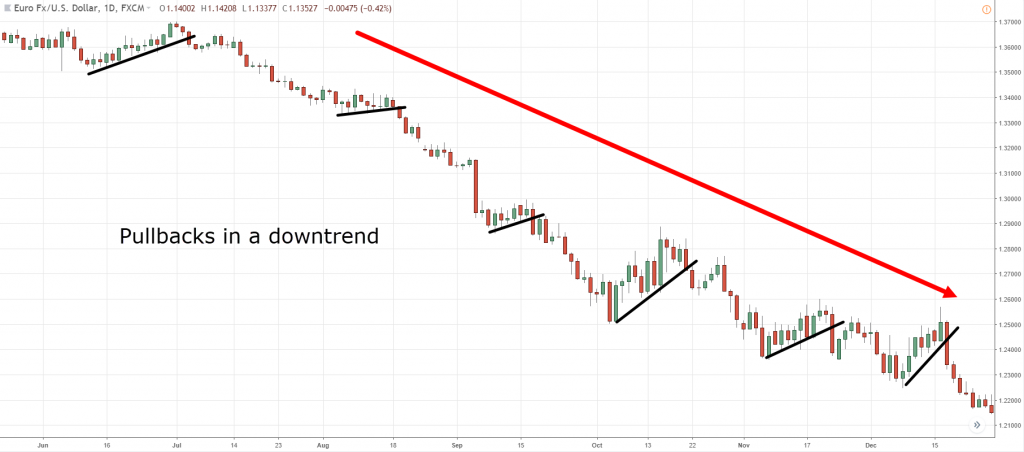
According to the work’s of Adam Grimes, trading pullback has a statistical edge in the markets as proven here.
What are the pros and cons of trading pullbacks?
Advantages of trading pullbacks:
Disadvantages of trading pullbacks:
A breakout is when price moves outside of a defined boundary.
The boundary can be defined using classical support & resistance.
Breakout to the upside: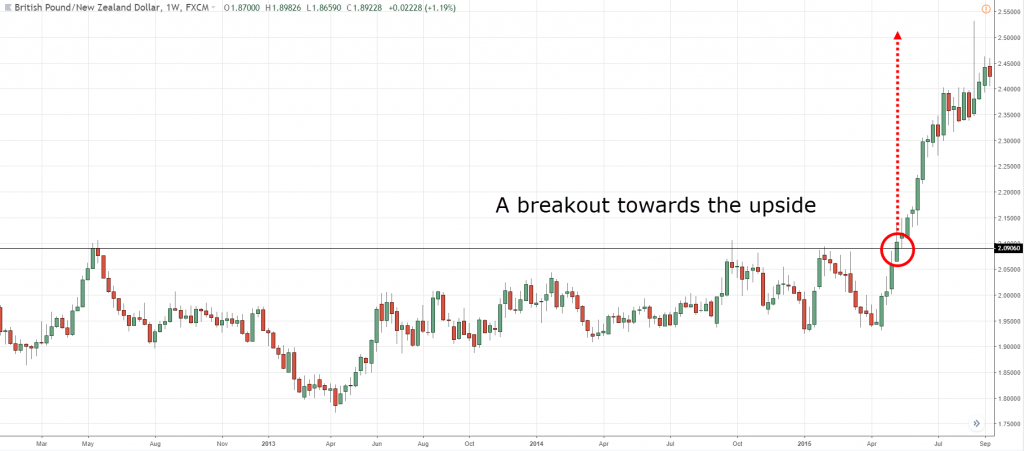
Breakout to the downside: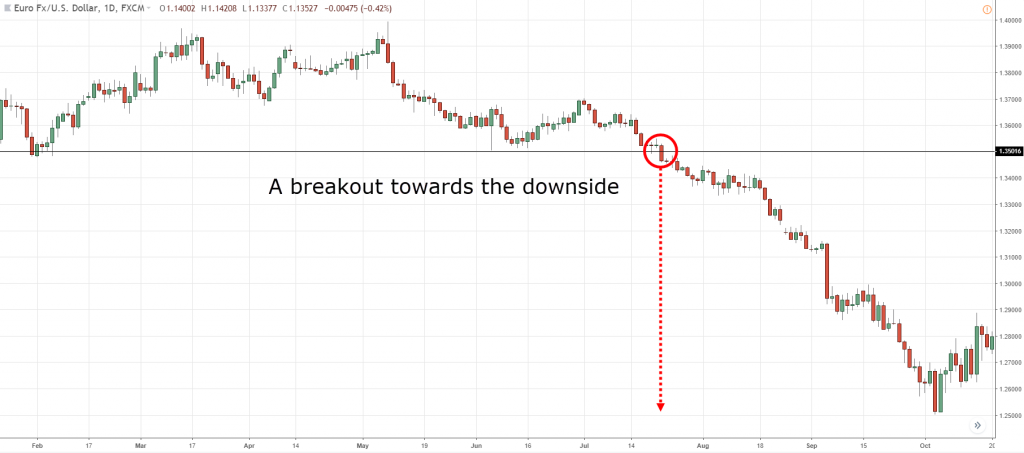
You’re wondering:
What are the pros and cons of trading breakouts?
Advantages of trading breakouts:
Disadvantages of trading breakouts:
Whether you’re trading pullback or breakout, there’s always one question on your mind…
Here’s the thing…
There’s no right or wrong about it. Ultimately you need to find an approach that suits you best, and which you can execute consistently.
Some traders would prefer to wait for a candle close, whereas some are fine without waiting for “confirmation”.
With that said, here are some pros and cons for you to bear in mind.
Pros of waiting for candle close:
Cons of waiting for candle close:
Remember… entry only determines the frequency of your trades (and you shouldn’t spend all your time and energy here).
The exit determines whether you’ll win or lose, which is vastly more important. This is what we’ll cover next…
“Place your stops at a point that if reached, will reasonably indicate that the trade is wrong. Not at a point determined primarily by the maximum dollar amount you are willing to lose.” – Bruce Kovner
Now you’re probably wondering:
How do I know when I’m wrong?
And the answer is simple. You’re wrong when your trading setup is invalidated.
Let me share with you a few examples…
Knowing when wrong at (AUD/USD):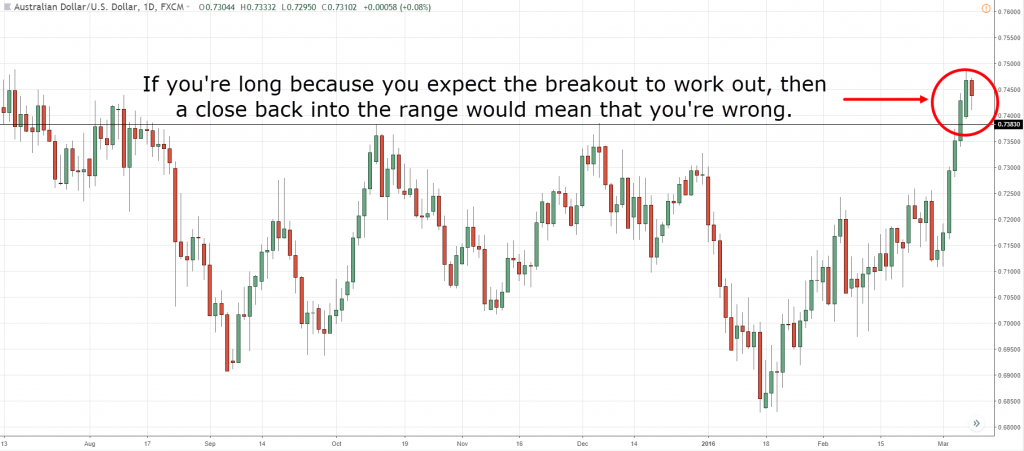
Knowing when wrong at (USD/CAD):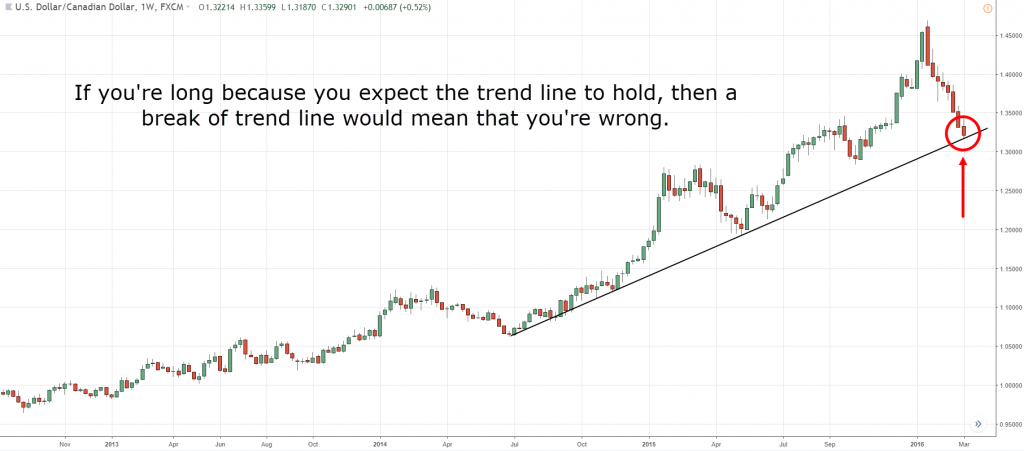
Knowing when wrong at (EUR/GBP):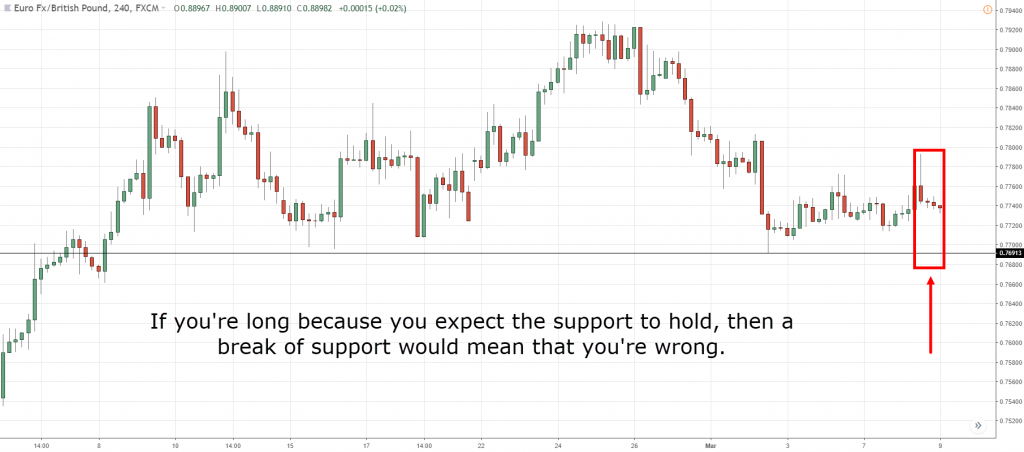
If you want to learn more, go watch this training video below:
I’ll be honest with you.
You’re never going to consistently exit your trades at the highs/lows.
What’s important, however, is to exit your trades based on your objectives.
With that said, here are some ways you can exit your trades:
It works by asking yourself the following questions:
And here’s the answer…
This means if you’re long, it would be prudent to take profits at nearest resistance since there’s potential selling pressure to push price lower.
And if you’re short, it would be prudent to take profits at the nearest support since there’s potential buying pressure to push the price higher.
Here’s what I mean:
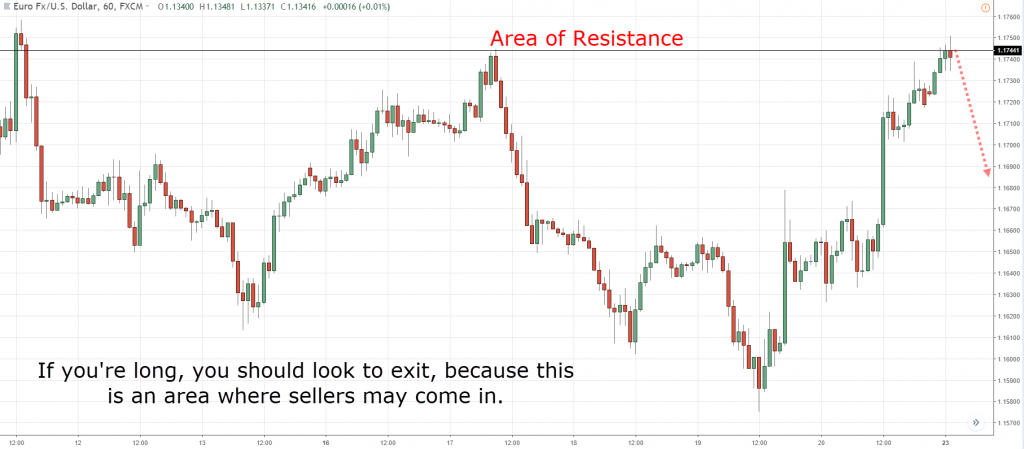
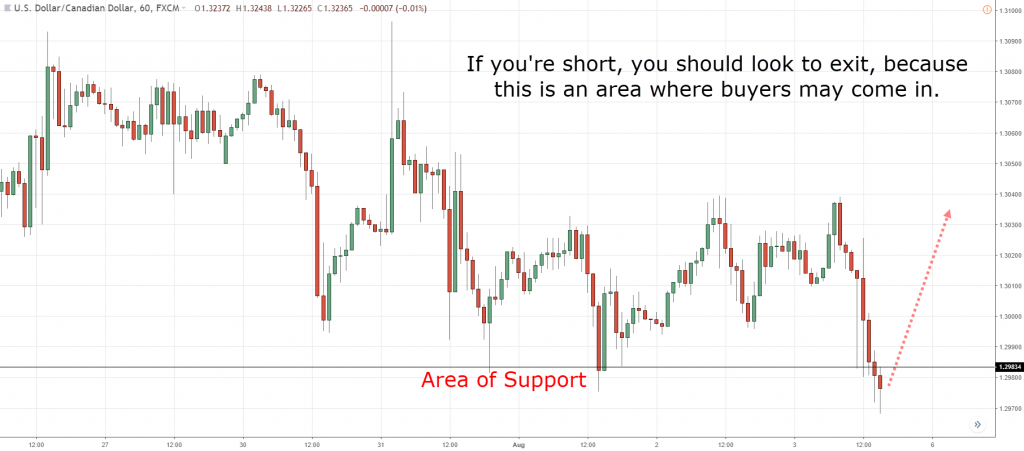
Moving on…
You can use RSI indicator to identify overbought and oversold areas (above 70 for overbought, below 30 for oversold). This can also act as Support & Resistance in the markets.
I’ve learned this technique from Steve Burns, in his book, Moving Average 101.
Here’s an example:
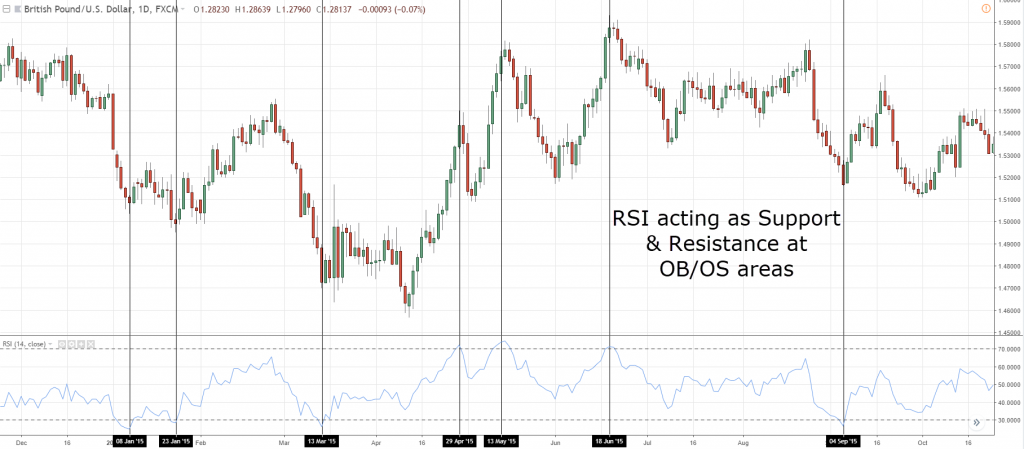
This approach works well when the market is in a range, or the trend is weak.
You’re probably wondering:
But what about strong trending markets?
This is when trailing your stop loss is the best thing to do…
You know an uptrend consists of higher highs and lows.
You can use it to trail your stop loss below the previous swing low, till it gets broken.
In a downtrend, you can use it to trail your stop loss above the previous swing high, till it gets broken.
Something like this…
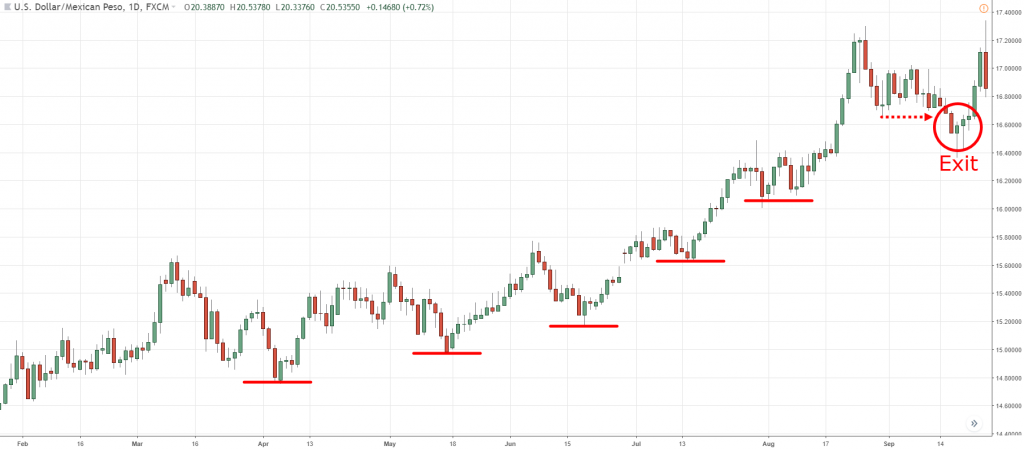
If you want to learn more, go read The Advanced Guide to Setting Your Stop Loss.
Trade management can be an entire topic in itself.
But in essence, it boils down to 2 things:
This means you’re exiting a partial of your position as the price goes in your favor.
You’re long 1000 Apple Shares at $100… and you sell 500 shares at $150, and another 500 shares at $200.
Here’s the thing…
There are different ways to scale out your trades, and different traders have a different approach to it.
The most common techniques are scaling out once a specific risk to reward is met, or at Support & resistance.
Pros of scaling out your trades:
Cons of scaling out your trades:
This means you’re adding positions as the price goes in your favor.
You’re long 1000 Apple Shares at $100… and you long another 500 shares at $150, and another 500 shares at $200.
There are different ways to scale in your trades, and different traders have a different approach to it.
The most common techniques are scaling in on pullbacks, or breakouts.
Pros of scaling in your trades:
Cons of scaling in your trades:
Here’s the thing:
There’s no right or wrong way in trade management. Some traders prefer to scale in their trades, some prefer to scale out, and some do a combination of both.
Ultimately, you need to find something that you’re comfortable executing consistently over time.
This is important.
If you’re not following your trading plan, then it’s impossible to find success in trading.
Because you will:
To put it straight… you’re gambling.
Now you’re probably wondering:
How do I develop a trading plan?
Just answer these 7 questions…
What is your time frame?
You must define the time frames you’re trading. If you’re a swing trader, then you’ll probably be trading the 4 hour or daily time frames.
What markets are you trading?
You need to state which markets you’ll be trading. It could be equities, forex, futures etc.
How much are you risking on each trade?
This boils down to risk management. You must know how much you’re prepared to lose on a single trade. For starters, I would suggest no more than 1%. This means if you have a $10,000 account, you cannot lose more than $100 on each trade.
What are the conditions of your trading setup?
You need to know the requirements of your trading setup. Whether you’ll trade with the trend, within a range, or both (For starters I would suggest trading with the trend).
How will you enter your trade?
You could enter on a pullback or breakout. Will it be a limit, stop or market order?
Where is your stop loss?
No professional trader would enter a trade without a stop loss. The first thing you need to ask yourself is, “where will I get out if I’m wrong?”
Where is your profit target?
And if the price moves in your favor, you need to know where to take your profits.
What are some of the things you look out for before putting on a trade?
Leave a comment below and let me know what you think.